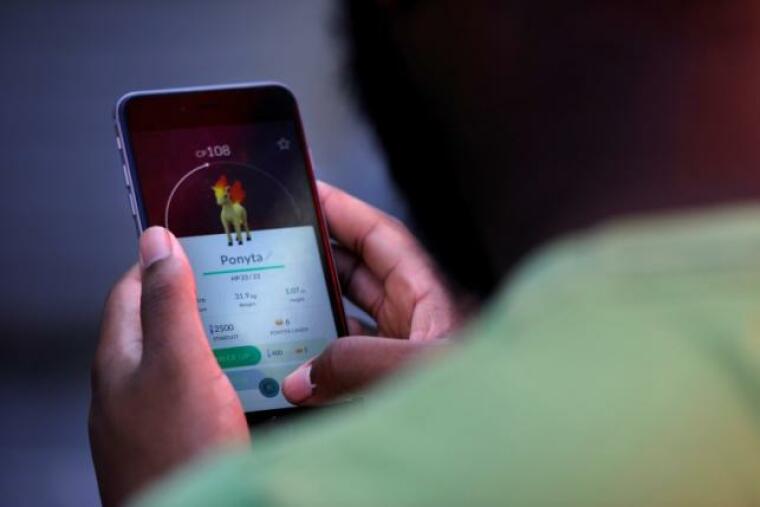'Pokémon Go' tracking features news 2016: Latest update brings new tracking features

Niantic Labs has unveiled a slew of enhanced features in its latest update to "Pokémon Go's" in-game tracking system — at least for beta testers.
A number of beta testers took the social media such as Reddit and Twitter regarding the developer's current efforts to address one of the players' long-standing issue over the hyper-popular augmented reality app-based game.
According to a CNET report, two types of tracking system features are currently being rolled back into the mobile game; these are the Nearby and Sightings tracker in beta forms.
How do these two revamped trackers work?
Just like the old version, "Pokémon Go's" Nearby tracker lists down all Pokémon that are within a player's immediate surroundings. It also identifies the PokéStops where trainers could drop by to hunt the virtual creatures. Unlike the old tracker, the updated one appears to be functioning quite well if beta testers' comments hold weight. The Sightings tracker, on the other hand, simply lists down all the Pokémon in a given area with a grass in the icon.
To start tracking a Pokémon, users have to press the View button to get to the map screen that shows where the nearest PokéStops can be found. If the target Pokémon flees before players reach the PokéStops, they will be notified that the creature has already left.
Not everyone is happy though. Some "Pokémon Go" players complain that they are not getting both of the upgraded tracking features. However, Niantic explained that the variation in user interface among beta testers is merely a part of the trial.
"We're currently testing a variation of the "Nearby Pokémon" feature with a subset of users. During this period you may see some variation in the nearby Pokémon UI," said Niantic in a statement.
In a related news, Thailand's National Broadcasting and Telecommunications Commission (NBTC) issued a warning to Niantic to drop sensitive locations from its map or face punitive measures. These sensitive locations include dangerous areas, religious sites, and state property, Bangkok Post reported. Failure to do so may lead to possible restrictions including outright ban.
 Christians don't have to affirm transgenderism, but they can’t express that view at work: tribunal
Christians don't have to affirm transgenderism, but they can’t express that view at work: tribunal Archaeology discovery: Medieval Christian prayer beads found on Holy Island
Archaeology discovery: Medieval Christian prayer beads found on Holy Island Presbyterian Church in America votes to leave National Association of Evangelicals
Presbyterian Church in America votes to leave National Association of Evangelicals Over 50 killed in 'vile and satanic' attack at Nigerian church on Pentecost Sunday
Over 50 killed in 'vile and satanic' attack at Nigerian church on Pentecost Sunday Ukrainian Orthodox Church severs ties with Moscow over Patriarch Kirill's support for Putin's war
Ukrainian Orthodox Church severs ties with Moscow over Patriarch Kirill's support for Putin's war Islamic State kills 20 Nigerian Christians as revenge for US airstrike
Islamic State kills 20 Nigerian Christians as revenge for US airstrike Man who served 33 years in prison for murder leads inmates to Christ
Man who served 33 years in prison for murder leads inmates to Christ


 Nigerian student beaten to death, body burned over ‘blasphemous’ WhatsApp message
Nigerian student beaten to death, body burned over ‘blasphemous’ WhatsApp message 'A new low': World reacts after Hong Kong arrests 90-year-old Cardinal Joseph Zen
'A new low': World reacts after Hong Kong arrests 90-year-old Cardinal Joseph Zen Iran sentences Christian man to 10 years in prison for hosting house church worship gathering
Iran sentences Christian man to 10 years in prison for hosting house church worship gathering French Guyana: Pastor shot dead, church set on fire after meeting delegation of Evangelicals
French Guyana: Pastor shot dead, church set on fire after meeting delegation of Evangelicals ‘Talking Jesus’ report finds only 6% of UK adults identify as practicing Christians
‘Talking Jesus’ report finds only 6% of UK adults identify as practicing Christians Mission Eurasia ministry center blown up in Ukraine, hundreds of Bibles destroyed: 'God will provide'
Mission Eurasia ministry center blown up in Ukraine, hundreds of Bibles destroyed: 'God will provide' Church holds service for first time after ISIS desecrated it 8 years ago
Church holds service for first time after ISIS desecrated it 8 years ago Burger King apologizes for 'offensive campaign' using Jesus' words at the Last Supper
Burger King apologizes for 'offensive campaign' using Jesus' words at the Last Supper Uganda: Muslims abduct teacher, burn him inside mosque for praying in Christ’s name
Uganda: Muslims abduct teacher, burn him inside mosque for praying in Christ’s name